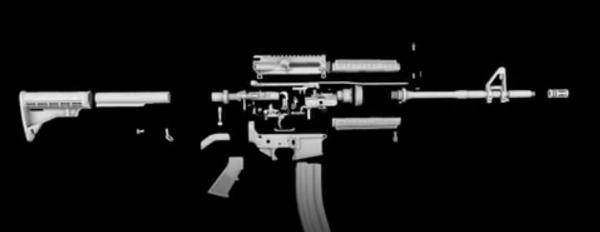EU research on digital DIY "vs" gun control becomes even more relevant
A landmark legal decision makes it possible for everybody to make their own, untraceable assault rifles at home. What now?
Radical gunsmith Cody Wilson, says Wired, just “won the right to distribute digital blueprints for DIY untraceable weapons -including AR-15s. Now anyone can make them”.

We are not turning back. But things are not as frigthening, or as simple, as they seem.
</em></u>
What now?
Short answer: it’s more complicated, and less frightening than it may seem at first sight. It also is unavoidable, so the sooner we accept we are not coming back but have to deal with this realistically, the better.
Slightly longer answer: 3Dprinting does make it technically easier, compared to the past, to “make at home” the parts of an actual assault rifle, or similar weapons. But that does not automatically mean that anybody can succeed in making at home an assault rifle that is actually usable for mass shootings, terrorist attacks or anything of the sort. Wired itself said so three years ago.
The longer answer: don’t panic, and think it through. Starting from here
From 2015 to 2017 the DiDIY Consortium researched the long term implications of massive adoption of DiDIY (“digital DIY”) in all fields of social and economic activity. I participated as a member of the Free Knowledge Institute.
What follows is just a short excerpt of the “DiDIY and gun control” part of our report on DiDIY risks, synergies and education. More on the same topic is available in the DiDIY guidance manual and policy guidelines in the WP7 section of DiDIY Results. For more information, research or other work in the same area, just email the DiDIY Project.
- The number of potential victims of OTHER unregulated, irresponsible usage of DiDIY… is very likely to be and remain, albeit low, much higher than that of victims of DiDIY weapons.
- We should remember that there has never been the need to use DiDIY, to engage in personal fabrication of firearms and other deadly weapons.
- These facts do not cancel the fact that DiDIY may make it much easier than it was even a few years ago to manufacture really, really dangerous weapons like automatic rifles, and that some new form of control and prevention of these specific risks is appropriate and desirable!
- In order to analyse these risks and present possible solutions to the problem of “DiDIY gun control”, it is useful to distinguish between:
- crimes, or accidents, actually committed thanks to DiDIY weapons;
- actual fabrication of weapons, thanks to DiDIY;
- production, study, possession and sharing of the related information, from 3D printing design files to any other documentation.
- The risks from the first type of activities are the easiest to evaluate and regulate. Homicide, armed robbery and similar crimes remain such, regardless of the origin of the weapons involved.
- Activities of the second type must be treated differently because there are even legal uses of weapons, e.g., in shooting matches, or hunting, not to mention research.
- The third activity, that is “production, study, possession and sharing” of the information to make a weapon via DiDIY, is the most problematic one.
- Legislation to ban not just physical, 3D printed guns, but the design files necessary to manufacture them may have symbolical and also some deterrent effect, but also has several limits.
- First of all, it is simply not enforceable… [and] also makes it harder to decide (and accept, by the public opinion) where to stop.
- Comparison of weapon design files with other types of dangerous “digital content” like child pornography, does not fully apply.
- Any attempt to preventively limit the capabilities of DiDIY manufacturing tools and software, instead, is going to be useless.
- There… seem to be better targets, for gun control in a DiDIY era, than design files, or 3D printers.
Who writes this, why, and how to help
I am Marco Fioretti, tech writer and aspiring polymath doing human-digital research and popularization.
I do it because YOUR civil rights and the quality of YOUR life depend every year more on how software is used AROUND you.
To this end, I have already shared more than a million words on this blog, without any paywall or user tracking, and am sharing the next million through a newsletter, also without any paywall.
The more direct support I get, the more I can continue to inform for free parents, teachers, decision makers, and everybody else who should know more stuff like this. You can support me with paid subscriptions to my newsletter, donations via PayPal (mfioretti@nexaima.net) or LiberaPay, or in any of the other ways listed here.THANKS for your support!